


A common question about modern chess theory is whether it is still possible to come up with anything at all new during the very early parts of the openings. Lots of hobby players ask professionals: "How far can chess develop, when machines are able to show the best alternatives so quickly? Will we soon run out of new discoveries?"
And as we will see from this topic, the answer is NOT YET! I will show here a very special and fascinating line to the Christmas tree that begins with 1.Nf3 d5 2.c4 d4 3.b4 g5.
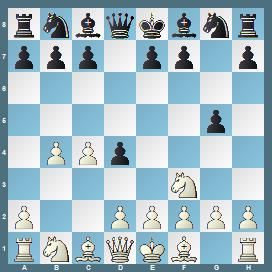
One might instantly say: "Are you crazy? Pushing a pawn so far on the kingside on the 3rd move with Black?! Does not it contradict good old opening principles completely?!" Well, these reactions are completely understandable. However, following fresh innovations, we have to admit that in particular cases, many of those principles can be broken. I always remember when my father used to speak about the battles between Kasparov and Karpov. Although it was just the 1980s, Kasparov gave his seconds the task to try changing the evaluations of openings around move five! And if it was possible 30 years ago, when the computers were not anywhere near the level they are these days, why would it be impossible in the modern era?
The idea of this hair-raising move is to either lure or drive away the f3-knight from its original location in order to occupy the centre better with ...e7-e5. It comes from Czech super GM David Navara who brought it into tournament practice ten years ago. On the other hand, three years passed until the second grandmaster to embrace the line appeared. In Mega Database 2021 you can find a just over 100 games. The lack of good, useful long games posed me some challenges in the process of editing my collection. I have to admit that there are many blitz and rapid encounters, which is not surprising taking into account that one definitely needs courage to launch such a wild attempt over the board that would count for rating points.
My goal with this material was first to show the reader something unique, and competitive at the same time. As there are still many unexplored roads, I share my own investigations as well.
At the beginning I will examine those side-lines where White declines the gambit:
1) Reacting in the centre with the seemingly logical 4.e3, which turns out be rather bad - Hillarp Persson,T - Morozevich,A 0-1.
2) Trying to confuse Black by 4.Qa4+ according to the main game of the line. I prefer the text move 4...c6 to 4...Bd7, on which I have also given extensive analyses. See the notes on Markowski,T - Navara,D 1/2.
3) And finally the most common, but modest 4.h3, as it was seen in Anton Guijarro,D - Urkedal,F 1/2.
White has two ways to grab the pawn: Directly by 4.Nxg5 (variation A) or inserting first 4.Bb2 Bg7 (variation B).
In case of 4.Nxg5 Black certainly reacts with 4...e5
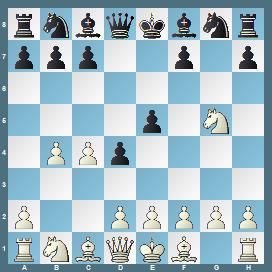
and now there is a split between A1) 5.Ne4 and A2) 5.d3
A1) Following 5.Ne4, a sharp clash can be expected after 5...f5 6.e3 -

check my comments on Daverkausen,B - Bellahcene,B 0-1.
A2) Meanwhile, 5.d3 yields a rather more strategical battle. It is worth mentioning that although Black won the sample game confidently, White committed a big mistake pretty quickly. Objectively speaking after 5...Bxb4+ 6.Bd2
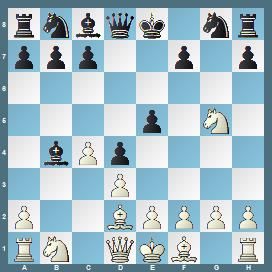
(instead of 6...Qxg5) I would prefer 6...Be7. You can find more about it here: Bocharov,D - Pridorozhni,A 0-1.
White's second main option is 4.Bb2 and after 4...Bg7 I discuss the following deviations:
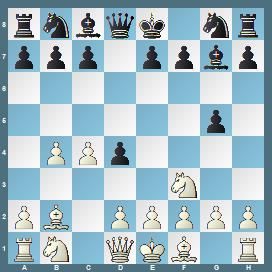
B1) Undermining the centre with 5.e3

whereupon one of my compatriots won an interesting game - Wang,T - Berczes,D 0-1.
B2) 5.Nxg5 e5 6.Ne4 f5

and here White can choose both available squares:
B21) 7.Ng3, which led to a painful defeat for White in Medvegy,Z - Sedlak,N 0-1.
B22) 7.Nc5, which is extremely wild, and thus a great ambassador of the whole variation. Black chases the knight further by 7...b6

when I examine two moves:
B212) The modest retreat 8.Nd3 featured in Reinderman,D - Schoppen,C 0-1 and
B222) the more ambitious 8.Qa4+ which occurred in the correspondence game Taylor,B - Hechl,G 1/2 that I would not suggest to follow for long.
Conclusion: In my opinion, the gambit line with 3...g5 has been one of the most interesting innovations in modern theory, especially at such an early stage of the opening. Black creates excellent chances for a powerful game, and their control in the centre is just undoubtedly strong. They can also retrieve the pawn on b4 if White is not eager to jump into the jungle with their knight to c5. Certainly, there is still a lot to discover, but at the moment I do not see a line which refutes this exciting idea. With such an opening choice Black would show that they are not faint-hearted, being brave enough to gift their opponent a pawn so quiclkly, and thus putting psychological pressure on them.
You can find the complete article with all games and analyses in the new ChessBase Magazine #206!
Hera: Reti Opening 1.Nf3 d5 2.c4 d4 3.b4 g5
Schandorff: Caro-Kann Advance Variation 3.e5 Bf5 4.h4 h5 5.Bd3 Bxd3 6.Qxd3. Qa5+ 7.b4!?
Szabo: Sicilian Nimzowitsch Var. 3.e5 Nd5 (Part II)
Braun: Sicilian Taimanov Variation 7.g4!?
Kapnisis: Petroff 3.d4 Nxe4 4.Bd3 d5 5.Nxe5/6.Nc3
Ris: Ruy Lopez with 3...Bc5 (Part I) 4.0-0 Nd4
Lorenzini: Ruy Lopez Delayed Exchange 6.Bxc6
Postny: London System 5.Nbd2 Qb6 6.dxc5 Qxb2
Grigoriants: Slav 3.Nf3 dxc4 4.e3 Be6 5.Nbd2
Vogel: Gruenfeld 5.Bd2 c5!?
Zelbel: King's Indian recipes against 6.Be2 (Part II)
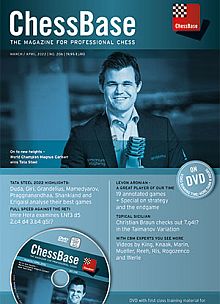
Order now at the ChessBase Shop ! Available as a download or on DVD.
| Advertising |